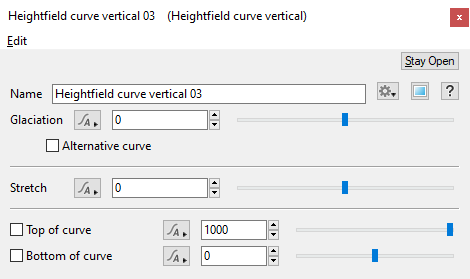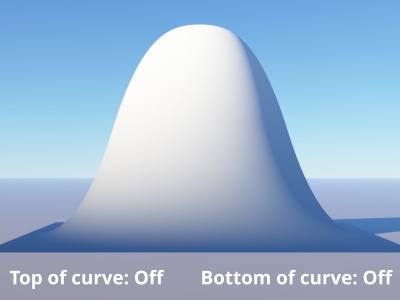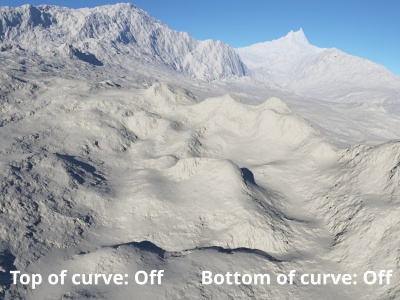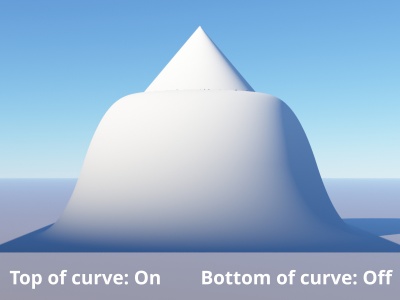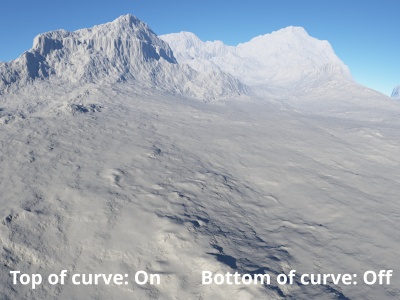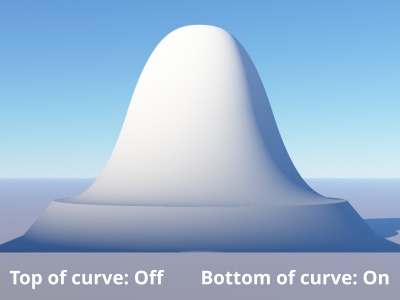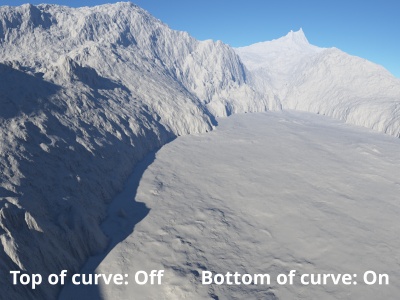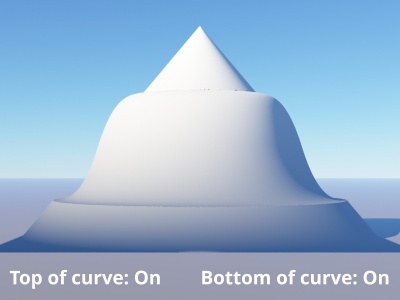Heightfield Curve Vertical
Overview[edit]
This node provides two types of curves, “Glaciation” and “Stretch”, in which to modify the terrain. You can think of the curves as extending vertically from the lowest point in the terrain to the highest point. The “Top of curve” and “Bottom of curve” settings allow you to set an altitude at which the curves start and stop, effectively overriding the lowest and highest points of the terrain.
Settings:
- Name: This setting allows you to apply a descriptive name to the node, which can be helpful when using multiple Heightfield curve vertical nodes in a project.
Glaciation[edit]
Glaciation is the erosion of the terrain by ice glaciers and the debris contained within them over a period of time. The two curve shapes, “Glaciation” and “Alternate curve” allow you to flatten out low altitudes while higher altitudes remain less affected.
- Glaciation: Positive values cause the lower altitudes of the terrain to flatten. Negative values cause the lower altitudes of the terrain to inflate and rise towards the highest altitude in the terrain.
- Alternative curve: When enabled, a different version of the Glaciation curve is used to give the profile of the terrain a different shape.
Stretch[edit]
- Stretch: The shape of this curve is similar to an “S” shape. As positive values increase, the terrain flattens at the top of the curve and the sides of the terrain become steeper. As negative values increase the terrain near the top and bottom of the curve move towards the mid-point of the curve, which is similar to erosion and deposition process.
Top and Bottom of curve[edit]
- Top of curve: When checked, or enabled, this value becomes the top position of the curve, essentially overriding the highest point of the terrain that the curve can affect.
- Bottom of curve: When checked, or enabled, this value becomes the bottom position of the curve, essentially overriding the lowest point of the terrain that the curve can affect.
A single object or device in the node network which generates or modifies data and may accept input data or create output data or both, depending on its function. Nodes usually have their own settings which control the data they create or how they modify data passing through them. Nodes are connected together in a network to perform work in a network-based user interface. In Terragen 2 nodes are connected together to describe a scene.
